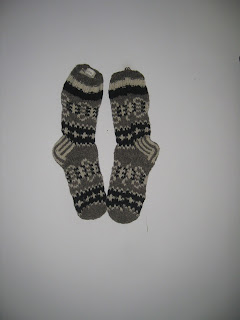So close to the shore and civilization, and yet so far from it! A rocky, desolate, uninhabited islet surrounded by beautiful, clear, blue waters . Upon it, a strategic, circular venetian sea fortress and remains of Europe's last leper colony (1903-1957ׁׁ).
Spinalonga, now tourist attraction
To get there I took the bus from Heraklion to the town of Agios Nikolaos (over an hour drive, nice scenery though), and then another bus to Elounda village(30-40 minutes) where boats were waiting to take visitors to notorious Spinalonga. The sailing takes 25 minutes from Elounda, and only ten minutes from nearby Plaka village.
sailing from Elounda to Spinalonga
arriving at the pier
A sense of great sadness fell upon me as I walked on the islet.
There were two gates to the place and several lookouts. One of the gates - a small dark tunnel was used for bringing in the lepers deported from Crete and from other parts of Greece.
The lepers were unaware of what was going to happen to them; they were tricked into entering the tunnel. Once inside they were captured and isolated forever.
the tunnel of 'no return'
venetian lookout; there are several of them
The fortress is not easily accessible; big rocks, hard climbing,
venetian fortress; rough terrain
so I focused on the colony buildings (partly restored, mostly ruins) : houses, two churches, hospital, shops/workshops, cemetery.
In spite of it all - the ilness, the difficulties, and the stigma - there was life going on there. The leprosy patients got a small allowance from the government, accomodation, medical attention, food, water, and other supplies. People fell in love, married and had children. They organized their houses and engaged in small cultivation of the land. Some of them had money sent by their family and lived a somewhat better life than the others.
archway access
to little dock where food and supplies were brought in
St. Pantelimon church
(the priest, healthy man,volunteered to live with the lepers)
St. George church- little cross on the roof, bell on the wall
The gap between the poor and those with some money, stands out at the small cemetery where there's a cruel hierarchy.There are three kinds of graves: a mass grave for the very poor, graves covered with tiles, and separate graves for those with money.
graves covered with tiles
graves for people with money
one single headstone, dated 2013
Spinalonga is a must see. It's moving and interesting, and a visit there is a way to pay tribute to those who suffered and struggled to survive. It is called by some "a monument to human pain" .


























































